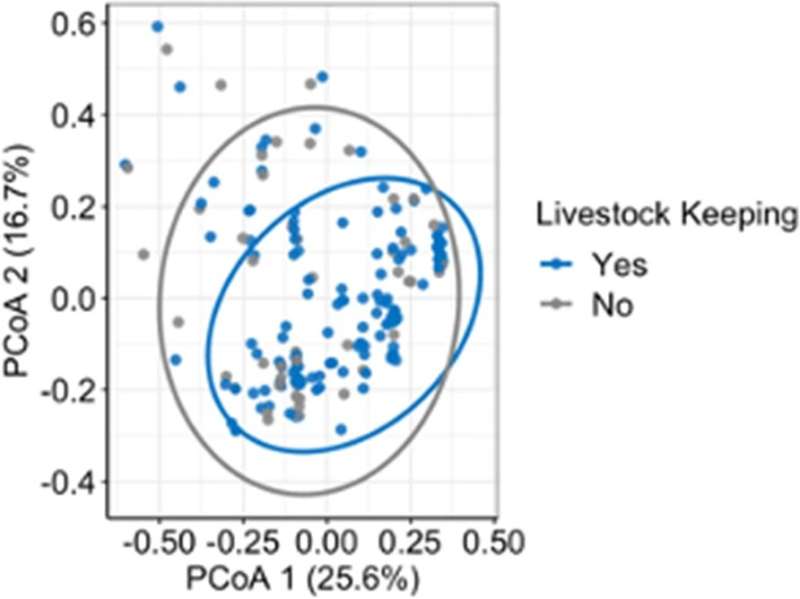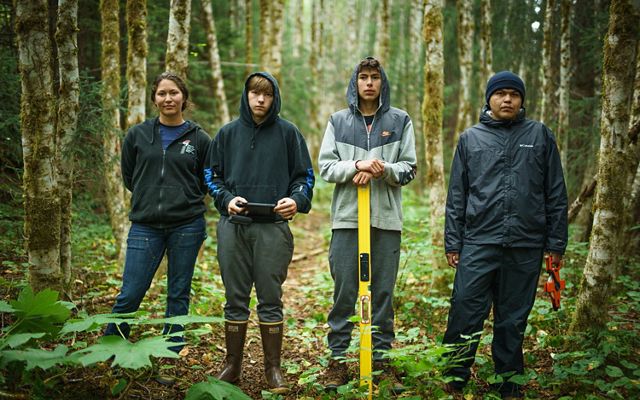
Scientists from the Worldwide Livestock Analysis Institute (ILRI), the College of Liverpool, the College of Edinburgh and elsewhere have traced how livestock programs act as a reservoir for antimicrobial-resistant (AMR) micro organism and AMR genetic determinants that will infect or colonize folks.
This sheds gentle on the components influencing AMR on the intersection of a number of species and the One-Well being sector. The research, undertaken in Nairobi, Kenya, seems on this week’s BMC Drugs, and helps element the way to keep away from and handle the event of drug resistance in micro organism.
Alexander Fleming, who found the world’s first antibiotic, penicillin, warned that misusing antibiotics might result in AMR. He confirmed that micro organism, viruses, fungi and parasites evolve when uncovered to antibiotic medicine and ultimately not reply to these medicines. Because of drug resistance, antibiotics and different antimicrobial medicines turn into ineffective and infections turn into more and more troublesome or unimaginable to deal with.
Immediately AMR will be discovered worldwide and is a significant issue. It has been estimated that until the problem is tackled now, by 2050 one particular person will die each three seconds due to AMR.
“Excessive-income nations can apply assets and huge investments in opposition to AMR in methods which low-income nations cannot,” defined research lead scientist Dishon Muloi, a Analysis Fellow on the Worldwide Livestock Analysis Institute (ILRI) and former Ph.D. pupil on the College of Edinburgh.
“However AMR is not only a high-income drawback or a low-income nation drawback. With the benefit at which it could unfold world wide, it is everyone’s drawback. So resistance in a neighborhood in Nairobi might really imply scientific failures in a clinic in Hong Kong in two days or three days. We aren’t but treating the issue with the urgency it wants, contemplating our related world.”
One path by which AMR is hypothesized to develop is thru the big quantity of antibiotics used within the livestock business, the place micro organism develop resistance after which unfold to folks. Quantifiable info addressing this has to this point been inadequate. Immediately’s research used genomics, epidemiology, and ecology to look into the patterns of AMR gene carriage in an exemplar organism, E. coli.
As a part of a managed epidemiological evaluation of 99 households in Nairobi, Kenya, scientists sequenced the entire genomes of micro organism remoted from 311 human, 606 cattle, and 399 wildlife excrement samples. Utilizing statistical fashions, they appeared on the prevalence of AMR carriage and described the variety and construction of the AMR genes in distinct host populations across the metropolis. In addition they investigated situations that might result in the unfold of AMR genes from people to sympatric animals on the family stage.
In animal and human isolates, the group discovered 13-point mutations and 56 acquired genes which might be identified to confer resistance to 9 totally different antibiotic courses. They found that the make-up of the AMR gene neighborhood isn’t associated to the host species, however that AMR genes had been steadily co-located, presumably on plasmids, suggesting that multi-drug resistance might be acquired and unfold in a single step. The chance for AMR transmission throughout human-livestock interfaces is biggest when manure is wrongly disposed of, and in bigger households.
Two coverage implications circulate from the research. The primary is to focus on the significance of ecosystem-wide surveillance of AMR. “Docs mustn’t simply be fascinated by the rise of AMR in people, however in livestock and the broader surroundings, as a result of what we’re seeing is that wildlife accumulate and transfer round with what they purchase from the surroundings,” mentioned Muloi.
The research’s findings of widespread carriage of clinically related AMR mechanisms in human and animal populations, particularly in wildlife that transfer long-distances, underline the significance of evidence-based surveillance to fight antimicrobial resistance on a worldwide scale.
“This research exhibits how simply antimicrobial resistance genes transfer between people and livestock in a crowded city surroundings, underlining that if we’re to beat the resistance drawback we’ll want a coordinated response throughout the medical and veterinary sectors,” says Mark Woolhouse, professor and Chair of Infectious Illness Epidemiology, College of Edinburgh.
Second is the problem of manure disposal, which can appear mundane, however is crucial. “In the event you drive round Nairobi, you see heaps of manure by the street,” mentioned Muloi. “We’ve not historically considered manure as an issue and even when we take a look at our insurance policies, that are just like these in lots of different nations, manure isn’t seen as a threat. But it surely’s clear we have to do a a lot better job of cleansing up the surroundings, for the sake of excellent public well being.”
The research is a part of an total challenge known as the City Zoo, or extra formally generally known as the “Epidemiology, ecology and socio-economics of illness emergence in Nairobi.” The target, says research lead Eric Fèvre, professor of veterinary infectious illnesses, Institute of An infection, Veterinary and Ecological Sciences, College of Liverpool and collectively appointed principal scientist, ILRI, is to grasp the mechanisms resulting in the introduction and unfold of pathogens into city populations. “Right here, we see that we have to take a holistic method, which incorporates people, animals, their waste and the shared surroundings,” says Fèvre.
Extra info:
Dishon M. Muloi et al, Genomic epidemiology of Escherichia coli: antimicrobial resistance by means of a One Well being lens in sympatric people, livestock and peri-domestic wildlife in Nairobi, Kenya, BMC Drugs (2022). DOI: 10.1186/s12916-022-02677-7
Supplied by
Worldwide Livestock Analysis Institute
Quotation:
How livestock programs act as a reservoir for antimicrobial-resistant micro organism (2022, December 9)
retrieved 12 December 2022
from https://phys.org/information/2022-12-livestock-reservoir-antimicrobial-resistant-bacteria.html
This doc is topic to copyright. Aside from any honest dealing for the aim of personal research or analysis, no
half could also be reproduced with out the written permission. The content material is supplied for info functions solely.


